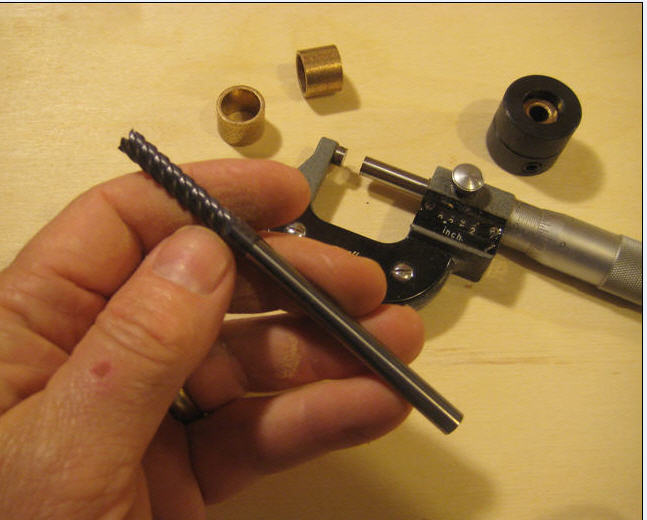
By Jack Ganssle
Ode to an End mill
Published 11/24/2008
My sailboat (https://www.ganssle.com/jack/) has a crummy plastic autopilot bolted to the wheel. The unit lasts about a thousand miles before needing a complete rebuild, and just isn't powerful enough to handle the boat in anything other than calm conditions. So this winter I'm replacing it with a better unit. But it needs a slot in the rudder shaft, so I'm building mini-milling machine that clamps to the shaft to route the slot.
We electronics types live in the world of fantastically-complex products like mobile phones, PCs and test equipment. How many billions of transistors do we need to get through an average day at the office? Even a machinist no longer directly controls his equipment; he's a high tech operator of a computer-controlled lathe or milling machine.
But that milling machine's thousands of pounds of cast iron and uncountable transistors exist only to enable a mill bit to route the work. The hugely-expensive machine is all about a $20 bit.
I am struck by the end mill's elegant simplicity. Sleek and murderously sharp, it's nothing more than a perfectly cylindrical segment of tool steel to which a carbide cutting end is welded. But that apparent simplicity mirrors the iPod's unadorned clean lines. I see nothing more than a simple bit; a tooling engineer no doubt understands the vast infrastructure needed to manufacture the mill. How do they put four sharp flukes on a material as hard as carbide? My micrometer tells me the shank is perfectly round, at least to the accuracy of that instrument. What marvelous techniques are needed to shape steel with such precision? How do they weld the dissimilar materials?
There must be a vast infrastructure of industry devoted to making mills, drill bits, and all of the cutting tools that literally shape our world. These plebian and disposable tools are oddly beautiful in their way. Though created for mundane purposes I find a high art in them. Look at the mill's slim profile, the spirals curving around at exactly a 45 degree angle. Michelangelo sculpted David, but who made this bit? David is beautiful, but cutting tools are much more useful. Is the inventor of the mill enshrined in machinist lore like Noyce and Kilby are in electronics?
I find milling machines to be generally ugly creations: big, heavy, squat, the paint is usually chipped and metal shavings and oil litter the cast iron. But the little bit of metal that does the real work, the mill bit itself, is functionally and artistically elegant. That small and often neglected bit is often wielded by an artisan to create another thing of beauty.
Alas, you'll never find an art critic in a machine shop. And that's a darn shame, for there is beauty in the mundane. But if this bit were classed as art, no doubt it would sell for $4000 instead of $20.


